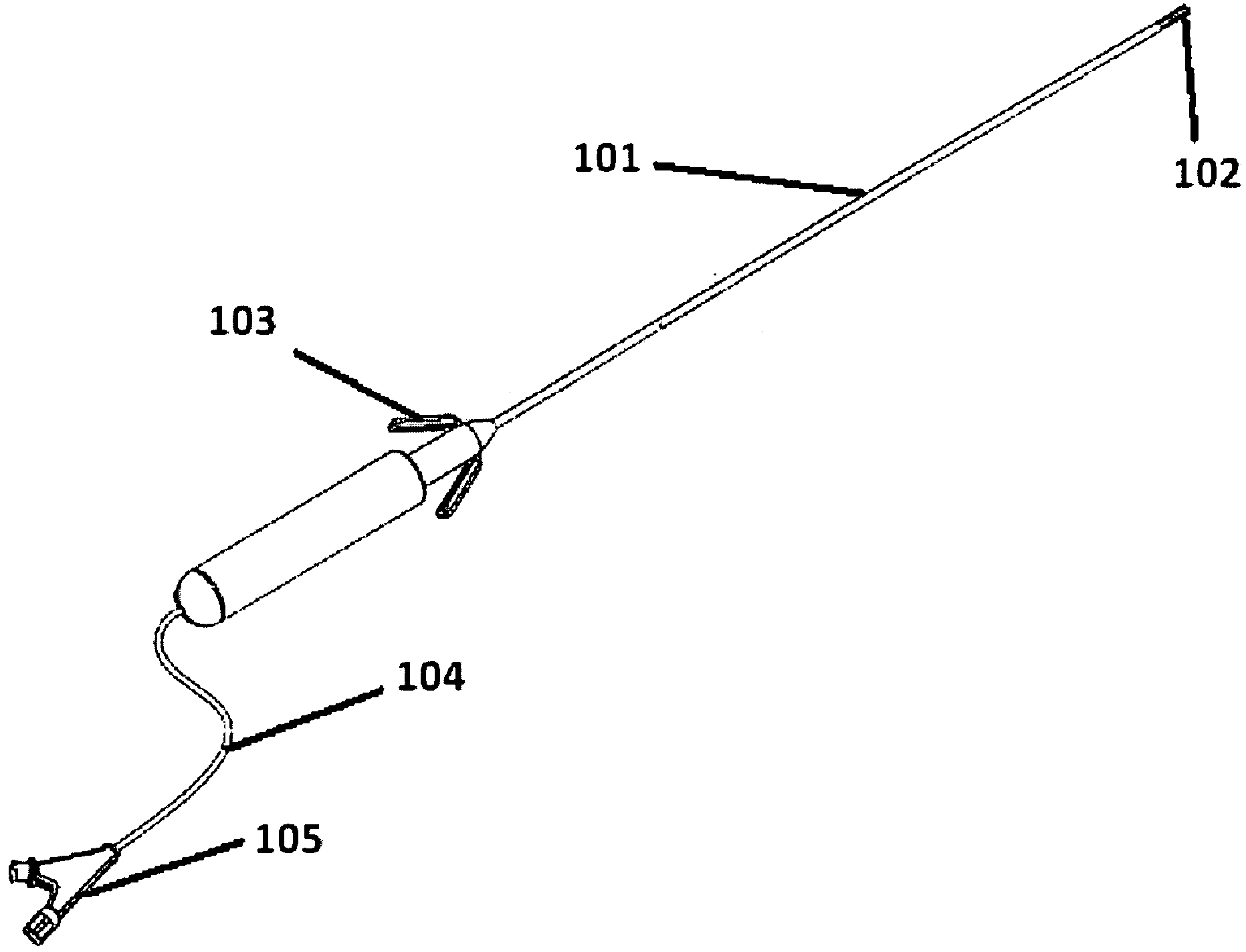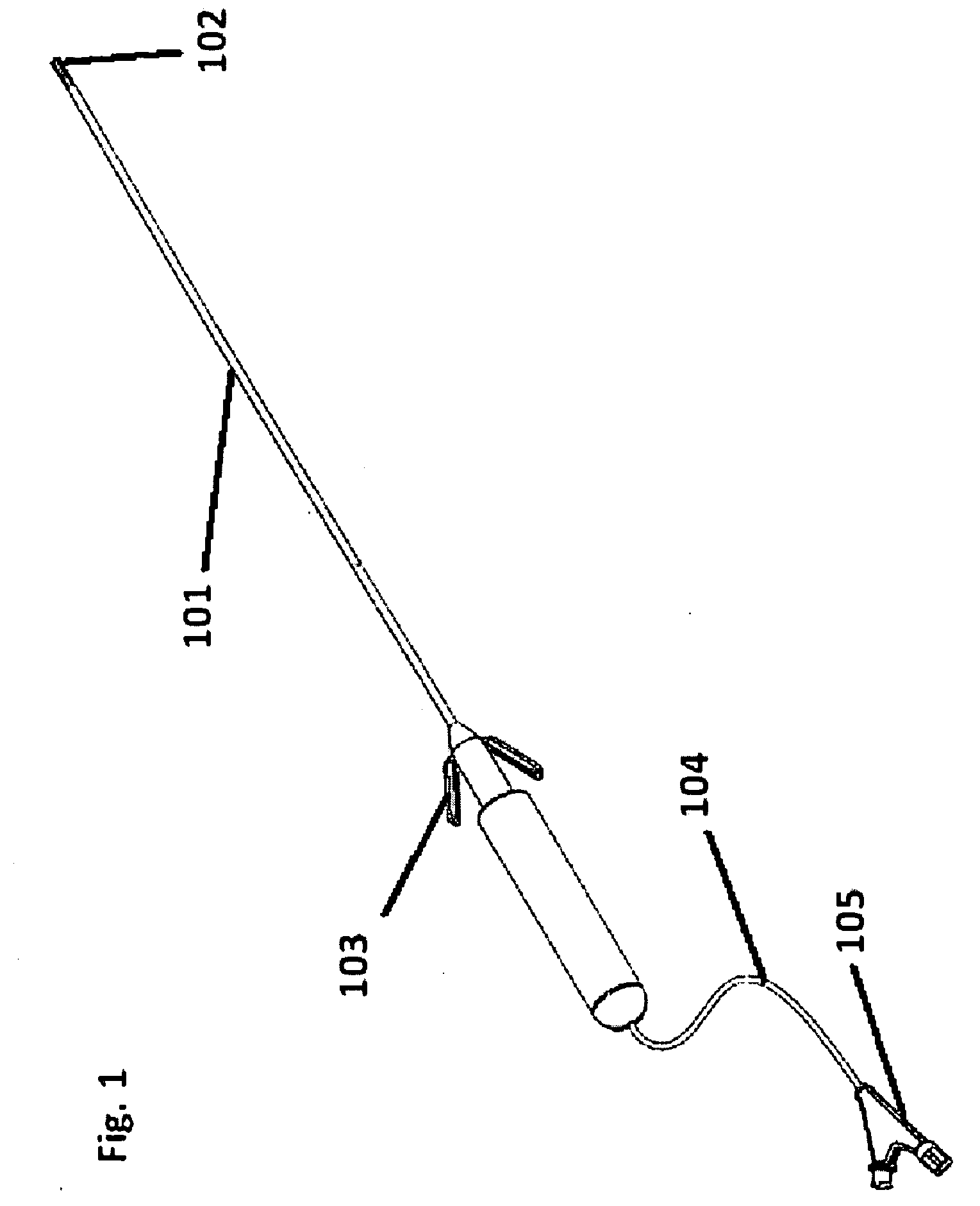Retrievable urethra sparing prosthetic stent and kidney stone intervention system
a urethra-sparing, prosthetic technology, applied in the field of medical devices, can solve the problem that the rbs is longer to reach the bladder's cor
- Summary
- Abstract
- Description
- Claims
- Application Information
AI Technical Summary
Benefits of technology
Problems solved by technology
Method used
Image
Examples
Embodiment Construction
[0038]A urethral balloon sheath (UBS) should be inserted to protect the urethral lining during the operation of the basket forceps (UDBF). The basket forceps are used to clear the urethra and the bladder's neck of stones before inserting the USPS system. To ensure that the balloon sheaths (UBS and RBS) are not over-dilated, causing irritation of the urethral lining, the sheaths may be composed partly of non-distensible materials or materials of limited distensibility.
[0039]Suitable non-distensible materials include polyester, polyvinylchloride (PVC), polyethylene terephthalate (PET), or polyethylene. Preferably, the outer layer of the balloon that abuts the lumen wall is made of a smooth, elastomeric material, including a silicone elastomer. Optionally, when the balloon is made of multiple layers, a lubricant can be provided in between the layers to reduce sliding frictions and to allow the maintenance of a smoothshape. The diameter of the balloon is around 2 mm to 4 mm during inser...
PUM
 Login to View More
Login to View More Abstract
Description
Claims
Application Information
 Login to View More
Login to View More - R&D
- Intellectual Property
- Life Sciences
- Materials
- Tech Scout
- Unparalleled Data Quality
- Higher Quality Content
- 60% Fewer Hallucinations
Browse by: Latest US Patents, China's latest patents, Technical Efficacy Thesaurus, Application Domain, Technology Topic, Popular Technical Reports.
© 2025 PatSnap. All rights reserved.Legal|Privacy policy|Modern Slavery Act Transparency Statement|Sitemap|About US| Contact US: help@patsnap.com



